Korean culture, from K-pop to k-dramas, has been taking the world by storm over the last few years. Amongst the many Korean cultural delights finally gaining the global recognition they deserve is its exceptional cuisine.
When it comes to what to eat in South Korea, the country is bursting with incredible dishes and delicacies for you to enjoy. No matter how long you have to spend in the country, you will never run out of new treats to tantalise your tongue.
With so much to choose from, I have managed to narrow it down to just eleven dishes, drinks, and treats that you should make a point to try during your trip.
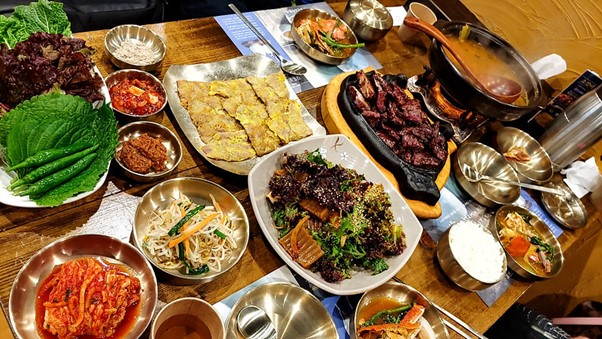
Know Before You Go
When you sit down to eat in most Korean restaurants, you will probably notice a selection of small bowls of food being laid out that you didn’t order. Don’t panic, it’s just the side-dishes, locally known as “banchan”.
Usually, banchan is complimentary or included with a small cover charge. Typical banchan you can expect include kimchi, pickled vegetables, and various salads.
One thing to be careful of with Korean food is how spicy it can be. A lot of the staple dishes, sides, and condiments pack a fiery punch. If you know you don’t handle spicy food particularly well, it would pay to ask for recommendations from your waiter.
Even if you are confident in how much spice you can take, don’t be too cocky. My friend ignored our Korean hosts’ warnings and ate a chili pepper off the top of a salad. She apparently couldn’t feel her face for five minutes thereafter… so use caution.
There are also some differences in restaurant etiquette to be aware of.
When eating at a restaurant in the west, we typically try to summon the waiter by catching their eye or with an unobtrusive hand gesture. Shouting for attention can feel obnoxious and rude. This is not the case in Korea.
My first time in a restaurant in Seoul, my friends and I spent five minutes desperately trying to catch a waiter’s attention. It was only when a kind man on the neighbouring table took pity and called loudly across the restaurant for our server that we learnt the Korean way.
Finally, as a country ruled by social hierarchy, even drinking alcohol has its rules. As a visitor, you won’t be expected to abide by these customs, although Korean friends may offer to teach you.
I could dedicate a whole post to the intricacies of Korean drinking etiquette, but for now, I’ll give you a heads up of the two main points.
Firstly, when sharing a bottle, it is polite to refill your friends’ glasses and wait for them to refill yours. Refilling your own glass can be seen as rude. Secondly, when taking a drink, younger people should turn their faces away from their older peers.
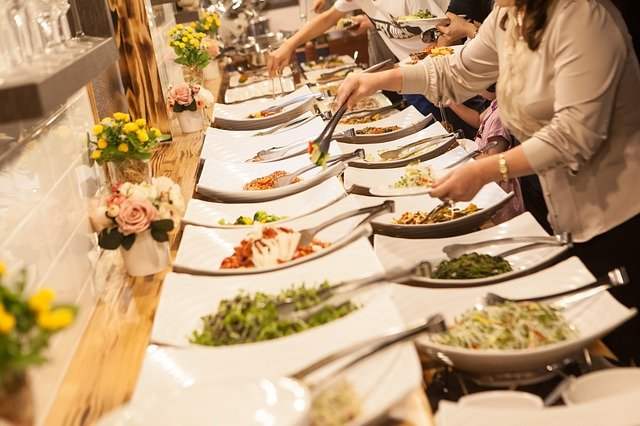
11 Best Foods And Drinks To Try In South Korea
We will now move on to our list of the 11 best foods and drinks to try in South Korea. This will give you a range of options covering various tastes and styles, ensuring everyone knows what to eat in South Korea when they arrive.
Kimchi
Probably the best known of Korea’s culinary exports, kimchi has been popping up all over the place over the last few years. Hugely trendy all over the world, you can easily get ahold of some kimchi without travelling all the way to Korea.
However, if you have the opportunity to try kimchi in its homeland you should consider yourself blessed. I have tried plenty of prepackaged, imported kimchis back home and few compare to what you get in Korea.
Kimchi is a fermented mix of nappa cabbage, chillis, garlic, and various other vegetables. It has a potent aroma and a bit of an acquired taste. Give it a try and you’ll soon see why many korean households have whole fridges dedicated to the stuff.
Aside from being delicious, Kimchi is also renowned for its health benefits. Like many fermented foods, it is packed with nutrients and probiotics. The process of making South Korean kimchi has even been granted UNESCO Intangible Cultural Heritage Status.
Kimchi is hugely versatile. Aside from being served on its own as a staple side dish, kimchi is also celebrated in stews, dumplings, and rice dishes. There are also variations of kimchi to try. A hugely popular variety involves swapping out the cabbage for cubed radish.
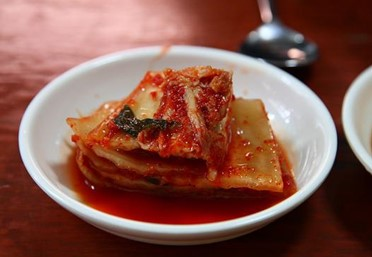
Bibimbap
Literally meaning “mixed rice”, at its core, bibimbap consists of pretty much whatever toppings you want, layered over a bowl of rice. The staple Korean dish is the perfect gateway into Korean cuisine, allowing you to ease into it with familiar flavours.
Typical toppings include shredded vegetables, meats, usually pork or beef, and egg. Seasonings and condiments, such as gochujang chilli paste, come on the side, allowing you to mix it to your personal preference.
If you want to try something a little more different, consider opting for toppings of raw beef or raw egg. If you do so, your meal will be served to you in a searingly hot stone bowl. The heat from the bowl will cook the meat or egg as you mix everything up.
Just be careful where you put your hands.
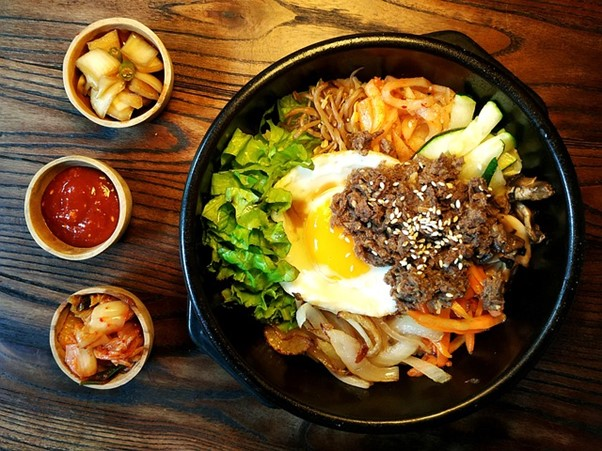
Tteokbokki
If there is one dish I personally recommend you make a point to try, it’s tteokbokki.
Delicious, filling, and with a very unique texture, tteokbokki is the perfect comfort food. In addition to being a staple dish in Korean restaurants it is also a popular street snack, so you will have plenty of opportunities to try it.
The main component of tteokbokki are small, chewy rice cakes. It’s the unusual texture of the rice cakes that makes this meal so iconic.
The rice cakes are served in a rich, sticky sauce, which is usually spicy with a hint of sweetness. If you aren’t such a fan of spice, black bean sauce is another popular option.
Various toppings can be mixed in, with sliced fishcakes being a traditional addition. If you’re really hungry, you might try rabokki, which adds ramen noodles into the dish. Alternatively, melted cheese amps up the indulgence of this already decadent dish.
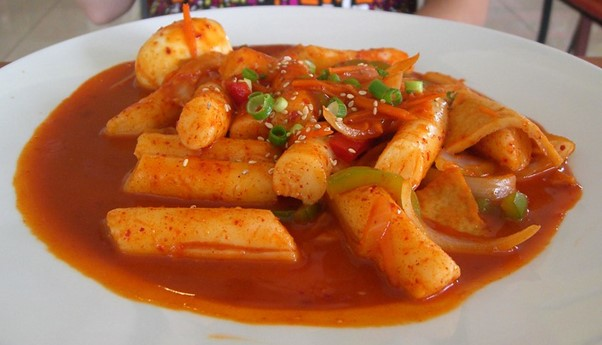
Pajeon
Popular as a side dish or snack food, pajeon is a tasty pancake stuffed with green onions and whatever other vegetables you’d like. Unlike the fluffy breakfast pancakes or soft crepes of the west, pajeon has a pleasantly crispy texture.
Simple and cheap but delicious, pajeon is another popular street food. Fairly light on the stomach, it’s perfect for when you want something to perk you up without weighing you down.
Pajeon typically comes ready sliced into squares, perfect for dipping into accompanying sauces. You will often see it in restaurants too. You can either enjoy it on its own as a pre-meal appetiser or have it as a side dish for mopping up stews and sauce.
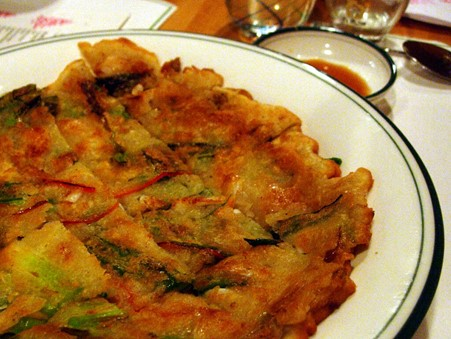
Naengmyeon
Summers in Korea are sweltering. Before the advent of air-conditioning, Koreans had to get creative with ways to keep cool when the temperatures soared. Enter naengmyeon, an ice-cold noodle dish.
Naengmyeon consists of long, chewy, buckwheat noodles in a thin broth, topped with sliced cucumber and assorted meats and vegetables. If the broth isn’t cold enough for you, it's totally normal to add a few ice cubes.
The unusually long noodles that are traditional for naengmyeon may also lead to your first introduction to another unique aspect of Korean dining culture. Dinner scissors.
Don’t be surprised when a pair of scissors is supplied along with the rest of the cutlery. The distinctly chewy texture of the buckwheat noodles means that cutting them shorter with scissors is more dignified than trying to gnaw through them with your teeth.
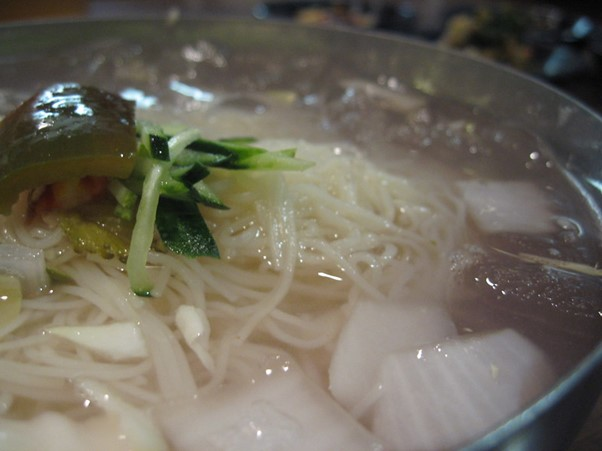
Korean Barbeque
More of an experience than a specific dish, Korean barbeque is a casual dining tradition that you should definitely take the opportunity to partake in. Although best enjoyed as a social experience, there’s no reason why solo travellers can’t give it a go too.
In Korean barbeque restaurants, the grill is often set directly into the middle of the table. Rather than order a specific meal, diners will order plates of meat and vegetables that they will then grill themselves.
Generally, Korean barbeque is very meat heavy. Beef is the top choice, although pork and chicken are also popular and more affordable.
Vegetarian options are fewer, although you can increasingly find sliced tofu on the menu too. Of course, you’ll also have plenty of banchan to enjoy. The side dishes are almost as important as the main dish at a Korean barbeque.
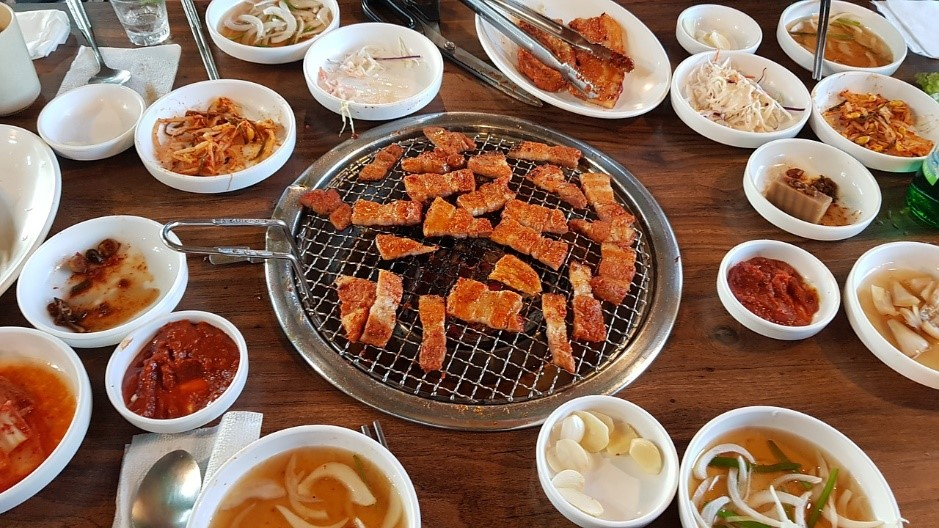
Gimbap
There are those who would dismiss gimbap as merely Korean sushi.
It’s true that the legendary Japanese dish and gimbap share heavy similarities and are visually almost indistinguishable at first glance. However, from the seasoning of the rice to the typical fillings, the two are plenty distinct from one another.
Unlike sushi, which is known for celebrating raw fish, gimbap is more typically stuffed with pickled vegetables, meat, and fishcakes. If you’ve always steered clear of sushi because you’re put off by the idea of uncooked seafood, this is your perfect alternative.
Gimbap is a bit of an umbrella term, pretty much referring to anything in which rice, “bap”, is wrapped in seaweed, “gim”. As such, there’s a huge variety for you to try.
You can find whole stores dedicated to gimbap. You can usually judge the best places to buy from based on where the longest queues are come lunchtime.
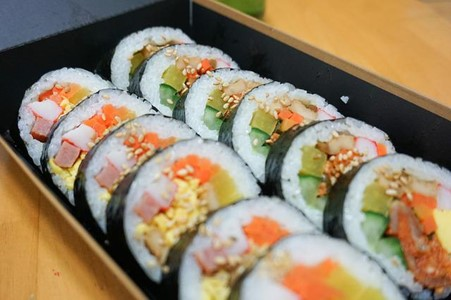
Bingsu
We’ve established that escaping the summer heat is the root of culinary innovation in South Korea, so it should be unsurprising that an iced dessert has made this list. Bingsu is popular year-round, with dedicated dessert parlours, but summer is when it really shines.
Plenty of countries have a take on shaved ice but Korean bingsu amps it up into a truly indulgent dessert. The ice itself is shaved particularly finely, piling up like powdered snow. The snow is then covered in a pile of indulgent toppings.
When choosing your toppings, you can stick to familiar flavours, like chopped fruit and nuts, condensed milk, or chocolate. Alternatively, try some more traditionally Korean options, such as sweet red beans, chewy rice cakes, or roasted soybean powder.
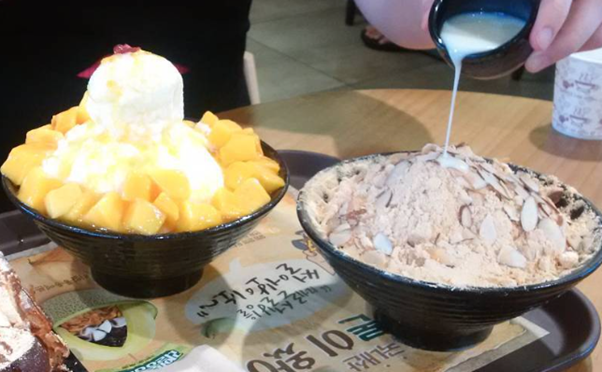
Soju
No night out in South Korea would feel complete without an iconic green bottle of soju making an appearance.
The national drink of Korea, soju is a clear, rice-based spirit. Although typically served neat in shot-sized glasses, soju is meant to be savoured, not shot down in one.
Although often referred to as rice whiskey or rice vodka, most soju only has an alcohol content of around 24%. It’s a much smoother drink than either of its counterparts.
If you still don’t enjoy the taste of neat alcohol, there are also plenty of flavoured options available. Grapefruit, peach, plum, and grape are all popular flavours.
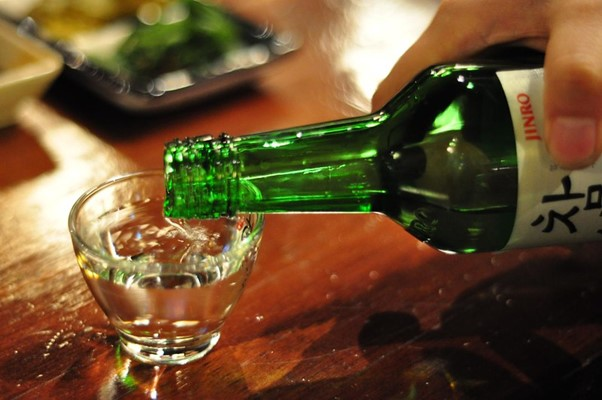
Makgeolli
Another rice-based alcohol, makgeolli is more akin to a rice wine. Not to be mistaken for the Japanese rice wine, sake, makgeolli is a cloudy, slightly fizzy drink. Traditionally, makgeolli is served cold in shallow cups or bowls.
A little bit sweet, a little bit tangy, and a little bit viscous, thanks to the unfiltered rice fibre, makgeolli is a unique drinking experience. It’s also quite a bit weaker than soju, at only around 8% alcohol content.
With its origins tracing back as far as the 9th century, makgeolli is worth trying just for its deep significance to Korean culture and history.
If you still need convincing, there are also lots of supposed health benefits to drinking it too. Claims range from improving digestion to slowing aging.
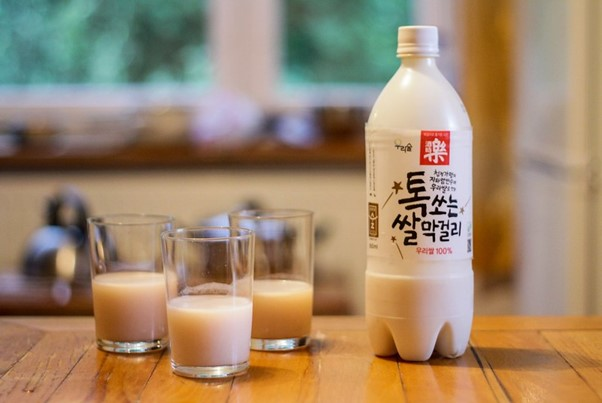
Sweet Potato Latte
South Korea is well known for its vibrant café culture. Its towns and cities are packed full of themed coffeeshops, offering tasty treats in elaborately styled surroundings.
It’s not only the quirky, gimmicky cafes that are worth visiting though. Even those cafes that don’t let you pet sheep or print your face on your latte have plenty of delicious drinks and desserts to try that you’d struggle to find back home.
One particular flavour that pops up often in South Korea is purple sweet potato. The vibrant vegetable is popular in desserts, flavouring everything from ice-cream to pastries. An especially interesting option is the purple sweet potato latte.
The drink has a smooth, slightly nutty flavour, with just a mild sweetness. It’s a fantastic caffeine-free alternative for those who want all the comforts of a warm drink, without the syrupy sweetness of hot-chocolate or steamers.
If nothing else, the drink is visually striking. Its bold purple colour makes the intricate latte art even more impressive. It makes for a far more interesting Instagram post than your run-of-the-mill Starbucks order.
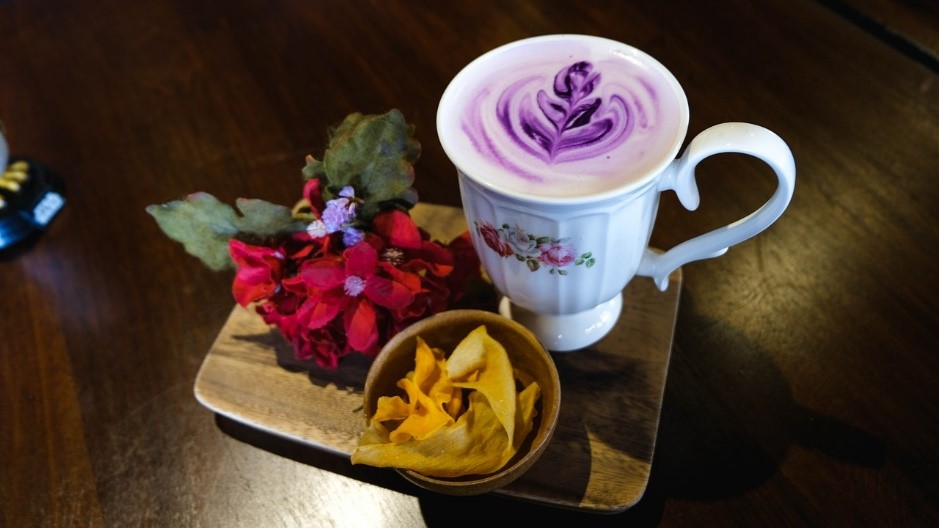
Final Thoughts
With these eleven items we have barely scratched the surface of all the delightful food for you to try in South Korea. Steeped in centuries of culture and tradition, they serve as an excellent introduction to the country’s heritage.
Whether you have a weekend or a week to spend indulging in South Korean cuisine, and no matter of you're staying in Seoul, Busan or Jeju, no-one will have to worry about going hungry.
Everyone should now know exactly what to eat in South Korea when they make their visit. That means you can now focus on what to do and where to stay, to ensure you can design the perfect South Korean travel itinerary for your visit.


